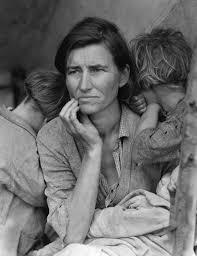Surprise!: Higher Minimum Wage = Fewer Jobs

By Olivia Grady
Many politicians and union leaders advocate for higher minimum wages, saying that this policy will help low-income workers. Unfortunately, a higher minimum wage hurts the people it is supposed to help by reducing their hours or eliminating their jobs entirely.
For example, in June 2017, the National Bureau of Economic Research published a paper called “Minimum Wage Increases, Wages, and Low-Wage Employment: Evidence from Seattle.”
The paper was written by Ekaterina Jardim, Mark C. Long, Robert Plotnick, Emma van Inwegen, Jacob Vigdor and Hilary Wething. All of these researchers are from the Daniel J. Evans School of Public Policy and Governance at the University of Washington.
The researchers examined the wage, employment and hour effects of the first and second phase-in of the Seattle Minimum Wage Ordinance. The first phase-in raised the minimum wage from $9.47 to $11 per hour in 2015, and the second phase-in raised it to $13 per hour in 2016.
The study concluded that while the first phase-in had a modest effect, the second phase-in reduced hours worked in low-wage jobs by about 9 percent. The wages did, however, increase by about 3 percent, but the total payroll fell. The result was that the ordinance reduced employee’s earnings by $125 per month on average in 2016.
The study had different results from some previous research in part because previous studies had only focused on lower-wage industries, like the restaurant sector, or lower-productivity employees, such as teenagers. Other researchers used data from the restaurant industry because this industry employs the most low-wage workers, and it also complies with the minimum-wage regulations. Data on teenagers is also used because they tend to be low-wage earners as well.
This study, however, looked at all categories of low-wage employees in all industries and worker demographics. The researchers wanted to study more workers to avoid biases, and they were able to do this using data from Washington’s Employment Security Department. The Department has the quarterly payroll records for all Washington workers who are covered by Unemployment Insurance. The researchers defined a low-wage job as one that paid below a certain hourly wage.
There was also the concern about having a good control group. Other researchers had used areas near to the minimum wage increase because employment characteristics would be similar nearby, but these researchers were concerned about spillover effects. They used areas near Seattle, but areas that weren’t next to Seattle where there would be spillover effects.
The researchers only used single-site businesses so that they knew what the business location was. These types of businesses are 89 percent of all businesses.
The study concluded:
There is good reason to believe that increasing the minimum wage above some level is likely to cause greater employment losses than increases at lower levels.
Interestingly, the researchers argued that previous studies that show little economic effect of a higher minimum wage are not accurate because of the data that they use.
The study also found that a higher minimum wage might result in more experienced workers doing the jobs of low-wage workers in addition to their own jobs. It might also lead to automation or the work might not be done at all.
While this study is on the latest minimum wage increase, research on the first federal minimum wage in 1938 during the Great Depression not surprisingly shows that the policy made the Great Depression last longer.





